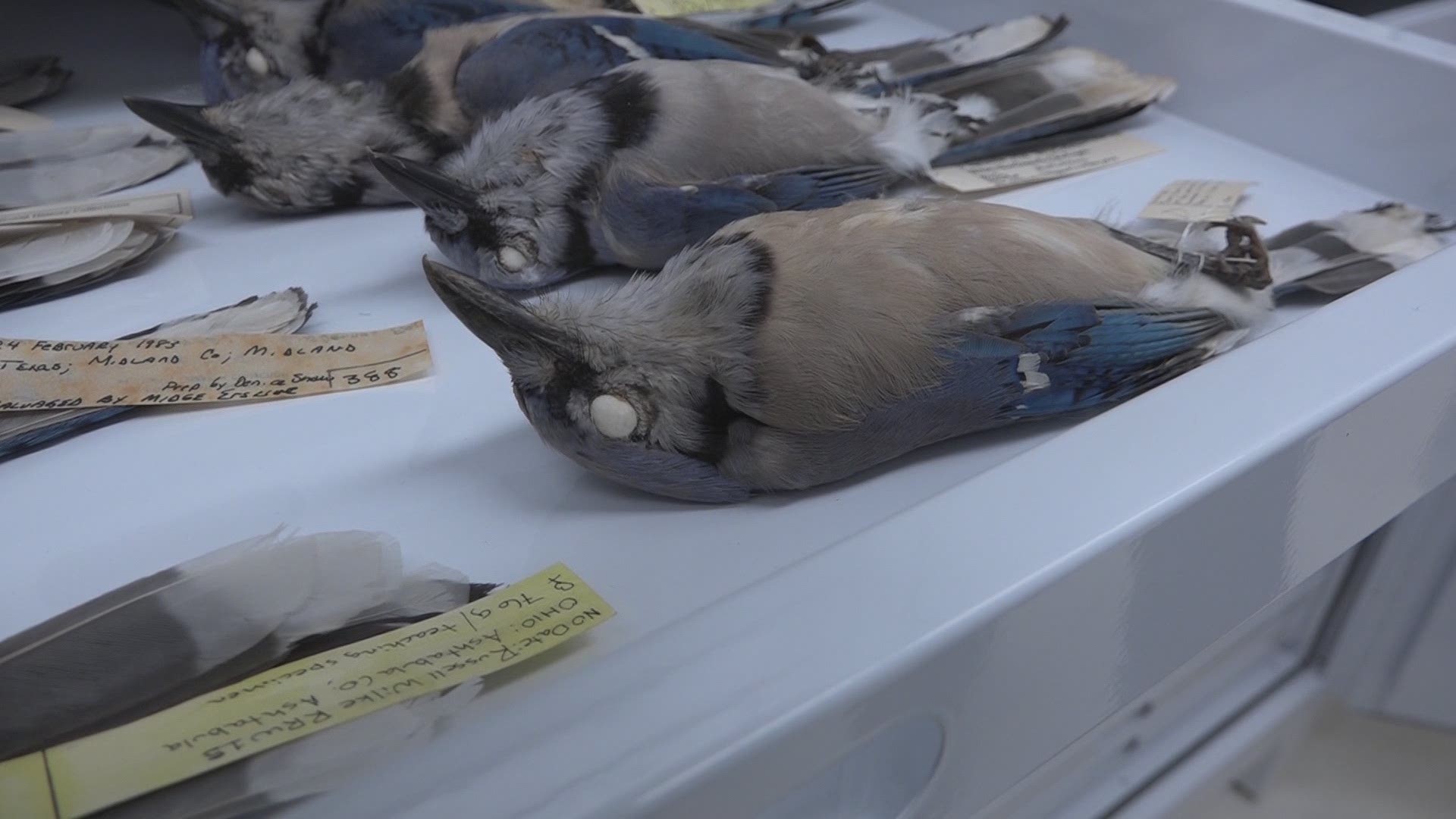SAN ANGELO, TX — "A lot of water fowl came in on this donation that are from Texas and Louisiana but also from high latitude north America, parts of New Zealand and we have a lot of taxidermies from Africa,” said Dianna Kejsa, Collections Manager for the Angelo State Natural History Collection.
A collection which recently received over 150 new preserved specimen all from a former faculty member.
"They're life like they show members of the community and kids what an animal looks like some of what its habits look like,” said Kejsa.
And she adds they're already being put to good use
"This specimen alone has already been seen over 1000 people this summer as we took them to outreach events," she said.
And although the collection features specimen from around the world,
"most importantly we have a lot of cool native species from the Concho valley, so this is a ring-tailed cat," said Kejsa.
The most recent donation includes a 14-foot crocodile and male African lion which are still being transported to the university.
"In our entire collection we probably have around 100 thousand specimens and that number is sort of influx because we're constantly cataloging and adding," said Kejsa.
These animals aid student and faculty in several areas of education.
"It’s just a major asset for student research that is conducted within the department," she said.
And Dianna says the specific data they provide are extremely important to museum science.
"Each of these individuals has information on its species, its sex where it was collected and when it was collected which makes it a lot more valuable," she said.
Currently there are several specimens displayed across ASU's Cavness Science Building.

